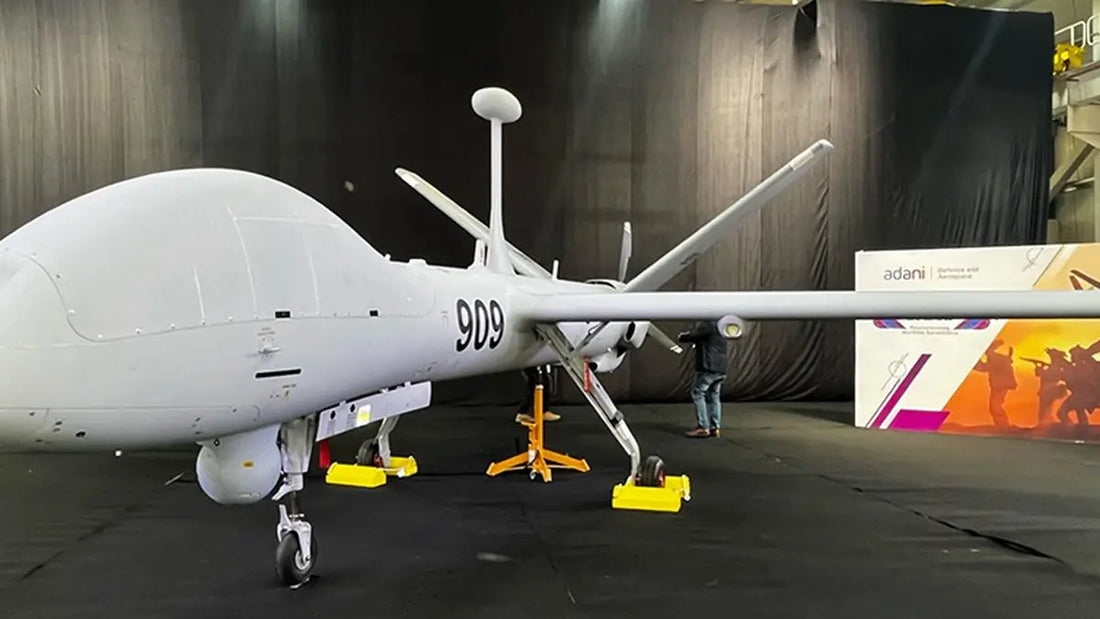India to Launch ₹30,000 Crore RfP for Indigenous MALE Drones, Boosting Defence Manufacturing

India is set to enhance its domestic defence manufacturing capabilities with a significant step forward in the form of a ₹30,000 crore Request for Proposal (RfP) for Medium Altitude Long Endurance (MALE) drones. This announcement was made by Defence Secretary Rajesh Kumar Singh during the Network18 Reforms Reloaded 2025 summit held in Delhi. This initiative represents a critical advancement in the government's efforts to achieve greater self-reliance in strategic defence technologies.
The introduction of MALE-class drones aims to bolster India's surveillance, reconnaissance, and strike capabilities, facilitating long-duration missions along the nation's borders and in operational zones. Officials stated that the substantial scope of the RfP reflects the government's commitment to fostering large-scale domestic production and encouraging active participation from both public and private sector companies.
Singh emphasized the lessons drawn from recent global conflicts, noting the growing reliance on drones and missiles in modern warfare. He highlighted that while India has historically maintained a measured approach to missile usage, future conflicts will necessitate larger stockpiles and quicker production, requiring a diverse industrial base beyond traditional state-run defence manufacturers.
Within this new framework, the Ministry of Defence plans to sustain annual capital expenditures of $25–30 billion over the next decade, with a minimum of 75% designated for domestic industries. Singh stressed that where technological maturity permits, procurement will strive to be entirely indigenous. The focus areas include drones, UAVs, underwater drones, satellite imagery systems, and precision munitions.
Addressing capacity limitations at state-owned enterprises such as BDL and MIL, Singh announced a move away from reserved orders to a more open competitive bidding process. The reforms will also offer dedicated support for start-ups, with procurement guarantees for five years and streamlined capital expenditure documentation anticipated by December 2025.
India's defence budget execution remains robust, with last year's allocation fully utilized and expectations of full absorption for the current fiscal year. Singh estimated ₹2–3 lakh crore worth of projects slated for execution this year, with a projected sustainable annual budget growth of 17–18% over the next five years.
In terms of air combat capabilities, Singh indicated that while fifth-generation fighter jets might not be immediately accessible, the gap can be mitigated by acquiring sufficient numbers of 4th and 4.5 generation aircraft equipped with advanced weaponry. This approach will maintain deterrence until indigenous platforms, like the Advanced Medium Combat Aircraft (AMCA), become operational.
Singh highlighted India's pragmatic stance on defence partnerships, emphasizing operational needs and technology access over political allegiance. The government is open to collaborating with both the United States and Russia for critical technologies, with upcoming contracts valued at ₹1.5 lakh crore and an additional ₹75,000 crore under consideration.
The forthcoming MALE drone RfP is anticipated to serve as a flagship example of India's evolving defence procurement strategy, integrating scale, competition, and indigenous industrial advancement to strengthen the nation's self-reliant and technology-driven defence capabilities.



















